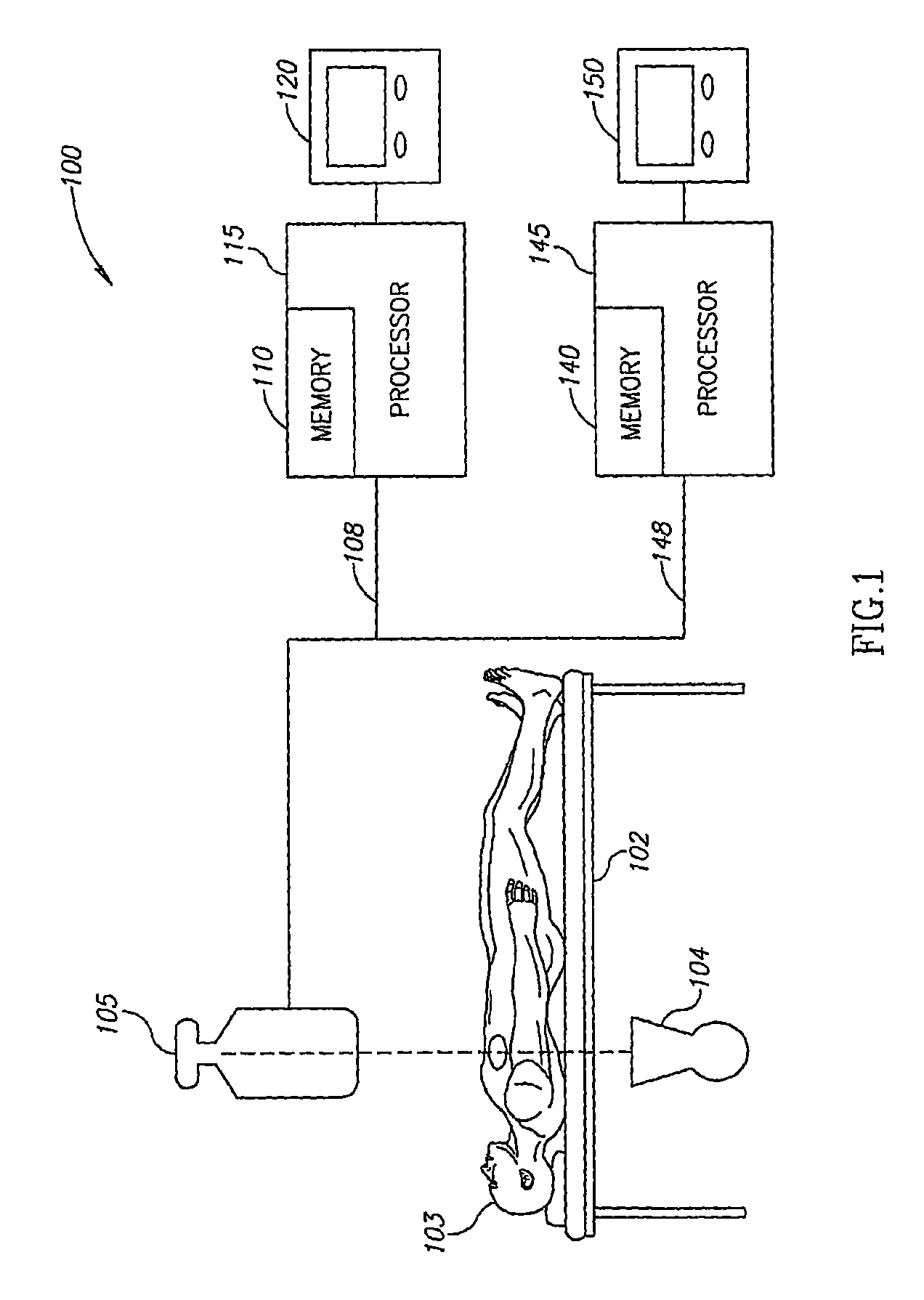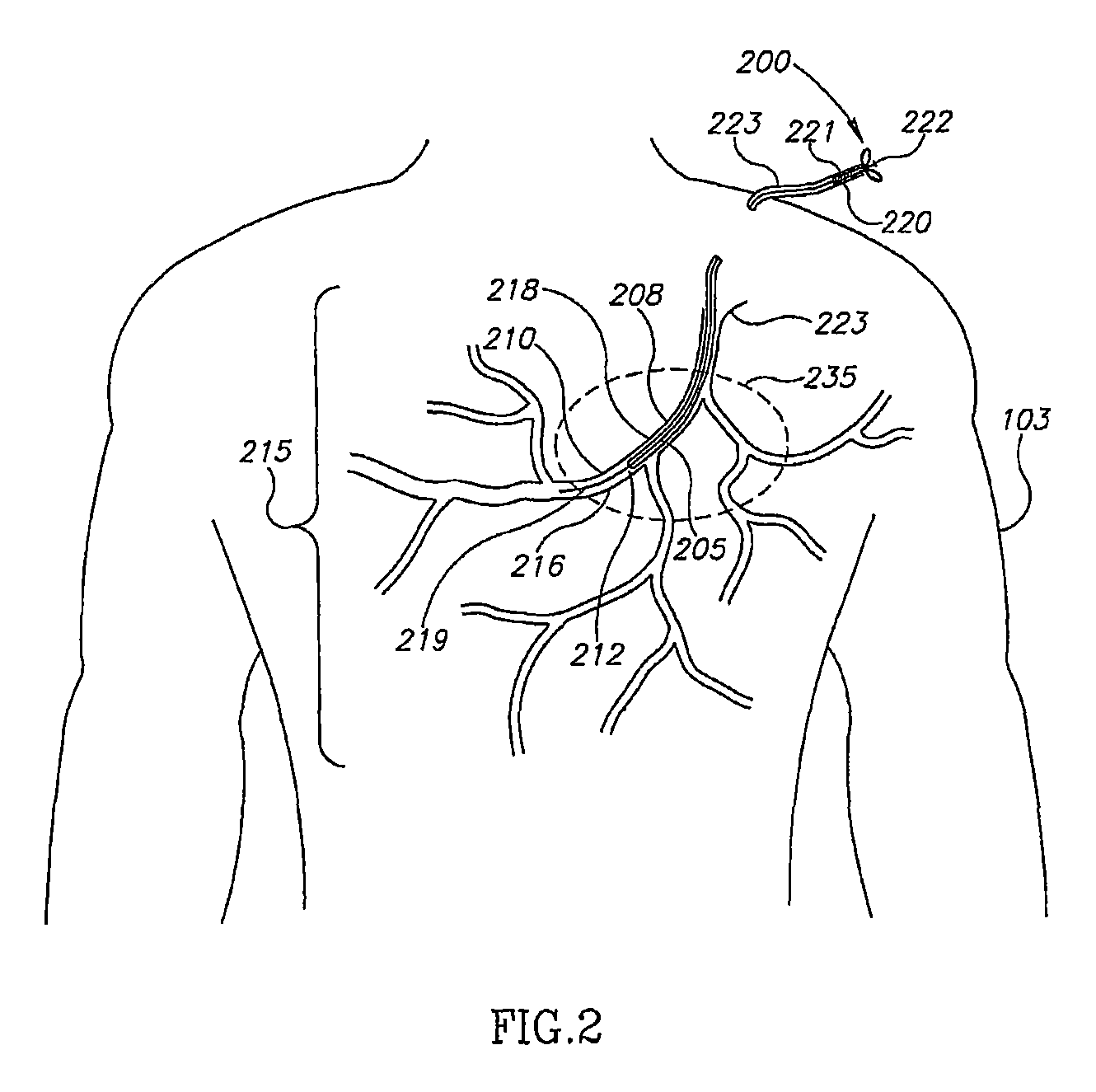Method and apparatus for positioning a device in a tubular organ
a tubular organ and positioning technology, applied in the field of medical systems, can solve the problems of unoptimized deployment of therapeutic devices such as stents, difficult navigation of guide wires in anatomies such as bifurcations and branches, and difficulty in insertion of guide wires, so as to improve the resemblance of the operator and improve the resemblance of the vessel
- Summary
- Abstract
- Description
- Claims
- Application Information
AI Technical Summary
Benefits of technology
Problems solved by technology
Method used
Image
Examples
Embodiment Construction
[0022]The disclosed invention presents an apparatus and method for automatic detecting and tracking of a device within a tubular organ, such as an artery, a blood vessel, or a urethra of a subject. In the context of the disclosed invention, “device” relates either to a guide wire tip, a catheter tip, or a therapeutic device. When the tubular organ under discussion is an artery, the therapeutic device is usually an intravascular therapeutic device, such as a stent, a balloon, a pacing lead, or the like.
[0023]The present invention can be implemented, but is not restricted to in the following procedures: catheterization procedure, bi-ventricular pacing, coronary angiography, coronary angioplasty, peripheral angiography, peripheral angioplasty, carotid angiography, carotid angioplasty, neuro angiography / plasty, biliary imaging or intervention, and the like.
[0024]In a preferred embodiment, the method of the present invention employs a diagnostic stage and a therapeutic stage. During the ...
PUM
 Login to View More
Login to View More Abstract
Description
Claims
Application Information
 Login to View More
Login to View More - R&D
- Intellectual Property
- Life Sciences
- Materials
- Tech Scout
- Unparalleled Data Quality
- Higher Quality Content
- 60% Fewer Hallucinations
Browse by: Latest US Patents, China's latest patents, Technical Efficacy Thesaurus, Application Domain, Technology Topic, Popular Technical Reports.
© 2025 PatSnap. All rights reserved.Legal|Privacy policy|Modern Slavery Act Transparency Statement|Sitemap|About US| Contact US: help@patsnap.com



